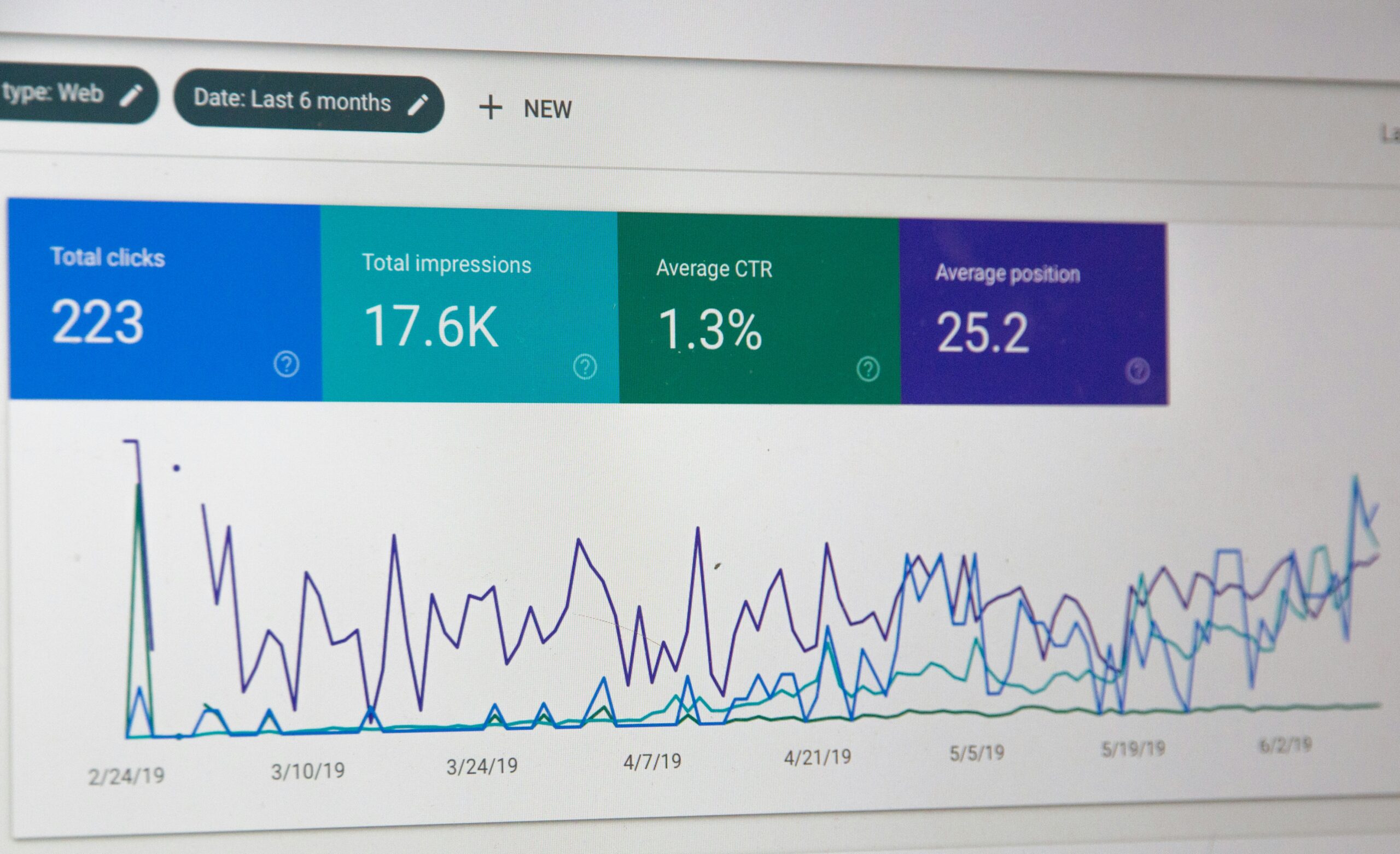This article dives into the intricate process of measuring conversion rate success and provides a structured framework that aligns conversion goals with broader business aims. It offers detailed guidance on setting benchmarks, employing key performance indicators, and distinguishing between macro and micro conversion events. By understanding these essential components, businesses can efficiently reduce customer acquisition costs while simultaneously improving customer lifetime value. Whether you are a thought leader, consultant, or personal brand looking to harness the power of digital marketing automation, the insights provided here will help you transform raw data into actionable strategies that drive sustainable growth and maximize return on investment.
Key Takeaways
- Organizations must align conversion goals with broader business strategies to maximize ROI.
- Detailed metrics and KPIs, including bounce rate and average session duration, are essential for evaluating conversion success.
- Robust systems and proper analytics tools enable accurate conversion rate measurement and effective campaign tracking.
- Continuous testing and ongoing optimization of user experiences are key to sustainable conversion rate improvements.
- Advanced techniques like multi-touch attribution and customer lifetime value analysis provide deeper insights into conversion success.
Defining Clear Objectives for Measuring Conversion Rate Success

A strong conversion strategy begins with clear, measurable objectives that reflect the broader mission of your business. These goals set the direction for your digital marketing efforts and help define what success looks like. Instead of focusing on surface-level clicks, brands should prioritize deeper outcomes such as quality leads or subscription growth. Clarity in objectives leads to smarter tracking, better content alignment, and more actionable insights. This foundation enables consistent improvements across campaigns and audience segments.
Aligning Conversion Goals With Broader Business Aims
Conversion goals should reflect long-term business strategy and not just immediate sales. They must be designed to support sustainable growth, including improvements in customer engagement and lifetime value. Prioritizing actions like demo signups or trial account creation often leads to deeper user relationships. These goals provide actionable signals for marketing automation tools and audience segmentation. When objectives reflect brand values and user outcomes, teams can measure more than transactions—they measure relevance. Internal alignment also boosts collaboration between departments by unifying around shared KPIs. The stronger the connection between goals and strategic vision, the more meaningful your measurement efforts become. Long-term success depends on goals that create real user value and trackable business progress.
Establishing Specific Benchmarks for Conversion Performance
Benchmarks help determine if your campaigns are successful or need adjustments. Instead of guessing, businesses should define numerical thresholds that reflect campaign purpose and platform. These may include acceptable cost-per-click, expected lead volumes, or ideal conversion rates by channel. Initial benchmarks are often set through small campaign tests and refined over time. Consistently monitored metrics help identify patterns across traffic sources and audience segments. High-performing campaigns provide a reference point for lagging ones. Automation tools can help monitor benchmarks in real time and alert teams to sudden dips or spikes. Over time, regularly reviewed benchmarks ensure goals stay relevant in changing digital environments.
Identifying Key Performance Indicators for Your Conversion Funnel
Selecting the right KPIs means looking beyond surface metrics. Effective KPIs offer a blend of volume and quality insights that reflect user intent and funnel health. These may include cost per lead, lead-to-conversion ratio, and time to conversion. Funnel stage analysis helps marketers pinpoint where drop-offs occur or where friction stalls movement. Sophisticated automation platforms can attribute performance to user segments and interaction types. This data improves personalized content delivery, increasing the likelihood of completion at each stage. KPIs also help track customer behavior across sessions and touchpoints. The most valuable metrics reveal which engagement strategies are actually driving meaningful conversions.
Differentiating Between Macro and Micro Conversion Success
Macro conversions are the main actions you want users to take, such as purchases or signups. Micro conversions track small interactions—like clicking a video or downloading a guide—that reveal user interest. Together, they form a layered understanding of how users move through the funnel. Monitoring both helps detect bottlenecks in the user journey. For instance, if micro engagement is high but macro conversions are low, your CTA or value proposition may need adjustment. Automation can segment users based on micro actions and retarget them effectively. Evaluating success at both levels ensures strategy is adjusted with precision. This dual-tracking approach leads to more effective, data-backed campaign refinement.
Core Metrics for Evaluating Conversion Rate Effectiveness

To measure success in digital marketing, brands must track more than just clicks. Core metrics provide a comprehensive view of how well your conversion funnel performs. From bounce rate to page views, these numbers reflect real-time user behavior and campaign impact. Monitoring these indicators reveals what’s working and where friction exists. They also form the data foundation for testing, optimizing, and personalizing content at scale.
Calculating and Tracking Overall Conversion Figures
The total conversion rate gives a high-level view of how effectively users take your desired action. Whether that action is signing up for a trial, downloading a resource, or making a purchase, it shows campaign performance in aggregate. By dividing total conversions by the number of site visits, you can monitor trends over time. High-performing landing pages and CTAs usually reflect strong alignment between audience intent and offer. Segmenting conversions by traffic source allows for better budget allocation. Digital tools provide dashboards for real-time monitoring and predictive insights. Use this metric as a baseline for iterative improvements. Reliable tracking ensures your strategy scales based on real behavior.
Analyzing Bounce Rate and Its Connection to Conversions
Bounce rate measures the percentage of users who leave after visiting only one page. A high bounce rate often signals poor user experience or a disconnect between expectations and content. If a user lands on a page that doesn’t meet their intent, they exit—wasting traffic potential. Reducing bounce rate involves improving site navigation, clarity, and page load speed. Bounce data helps prioritize pages that need stronger calls to action. Combining bounce insights with session recordings reveals where friction occurs. Improving this metric can boost time on site and increase chances for conversion. Lower bounce rates indicate content relevance and strategic alignment.
Assessing Average Session Duration for Engagement Clues
Average session duration reveals how long users engage with your site during a visit. Short durations may suggest unclear messaging, poor layout, or irrelevant content. Longer sessions typically correlate with higher conversion likelihood, especially if users explore multiple offers. Tracking this metric helps identify which pages successfully hold attention and which need redesign. This insight is useful for prioritizing content updates and layout changes. You can also pair it with other behavioral data to refine audience segmentation. The goal is to create a smooth experience that keeps users engaged. High engagement leads to better conversion performance and increased user trust.
Monitoring Page Views Per Session to Gauge Interest
Page views per session indicate how deep users explore your site before exiting. A higher number usually suggests interest, while low page depth may point to weak navigation or scattered CTAs. Pages with consistently low engagement should be reviewed for layout and content quality. By tracking how visitors move from landing pages to other sections, you can improve funnel design. This metric also highlights which content paths guide users toward conversion. Tools that map user journeys help refine site structure and links. Use these insights to build more efficient, goal-driven pathways. Sustained improvement here boosts both engagement and sales.
Optimizing Strategies Through Continuous Conversion Rate Measurement

Conversion tracking is only valuable when it’s used to enhance performance. Nurture Machine emphasizes this through a commitment to continuous refinement powered by behavioral data analysis. This involves improving site content, layout, and CTAs based on real user interactions. By iterating with purpose, businesses evolve strategies to match shifting customer expectations. Regular updates based on performance findings fuel long-term conversion gains.
A/B Testing Elements to Improve Conversion Outcomes
A/B testing compares two versions of digital elements—like buttons, images, or layout structures—to identify what drives better user response. This method is essential to eliminating guesswork and validating design choices. Nurture Machine integrates A/B testing into its automated optimization workflow, helping clients tailor high-converting versions of content across pages and funnels. Over time, this data-driven strategy sharpens creative assets for increased effectiveness.
Refining User Experience Based on Measurement Findings
Understanding how users interact with your site is key to delivering a seamless experience. Metrics such as bounce rate and scroll depth help identify bottlenecks. Refining layouts, mobile responsiveness, and page speed enhances usability. With Nurture Machine’s real-time analytics and heatmap integrations, businesses can pinpoint issues and deploy fast adjustments. These optimizations reduce friction, leading to smoother journeys and improved conversions.
Iterating on Calls to Action for Better Performance
Calls to action are the gateways to conversion and must be continually optimized. Factors like button color, placement, and language can all impact performance. A weak or vague CTA may result in lost opportunities, even if the rest of the page is effective. We test variations to determine what drives more clicks and conversions. Successful CTAs are clear, action-oriented, and aligned with user intent. Feedback from analytics helps guide CTA revisions over time. Marketers can then standardize high-performing versions across digital channels. Continuous iteration ensures CTAs evolve to meet audience expectations.
Personalizing Content Delivery Using Conversion Data
Personalization is a powerful tool for increasing conversion rates. By analyzing user behavior, interests, and interaction history, Nurture Machine delivers tailored messaging. Dynamic content adjusts based on segments like buyer stage, location, or referral source. Personalization makes users feel understood, increasing engagement and trust. Email campaigns, landing pages, and popups can all be personalized using conversion data. Tools that track user preferences enable real-time content adjustments. This results in more relevant interactions and higher conversion potential. Personalization strategies grow stronger as more data is collected and applied.
Frequently Asked Questions
What are the first steps in measuring conversion rate success?
The process begins with setting measurable goals that align with broader business outcomes—such as increasing purchases, generating leads, or growing subscriber lists. Nurture Machine helps businesses define these objectives, establish tailored KPIs, and map them across the conversion funnel. This structured approach ensures that every optimization effort supports long-term value and fuels smarter automation strategies for sustained success.
How do bounce rate and average session duration affect conversion rates?
Bounce rate and session duration reveal how users interact with your site and how effectively it holds their attention. High bounce rates may signal poor user alignment, while longer sessions often indicate strong engagement. Nurture Machine uses these behavioral insights to fine-tune landing pages, messaging, and navigation—reducing friction and guiding visitors smoothly toward desired actions to improve conversion results.
Why is multi-touch attribution important in conversion measurement?
Today’s digital journeys involve multiple steps and platforms. Multi-touch attribution identifies which touchpoints influence conversions—whether that’s an email, ad, or web visit—allowing marketers to understand the full impact of their campaigns. Nurture Machine leverages attribution data to optimize budget allocation and sequence marketing efforts for higher performance across all customer journey stages.
How can A/B testing improve conversion outcomes?
A/B testing empowers teams to compare different content, layouts, or CTAs and uncover what resonates best with their audience. It eliminates guesswork and boosts conversion accuracy. With Nurture Machine’s built-in testing tools, businesses can continuously experiment and evolve their strategy using real-time data—ensuring every change improves engagement and drives measurable outcomes.
What role does customer lifetime value (CLV) play in conversion rate measurement?
CLV measures the total value a customer brings over time—not just a single transaction. Nurture Machine emphasizes long-term engagement and retention by helping clients understand CLV, optimize lead nurturing, and refine conversion strategies based on projected value. This ensures resources are focused not just on acquiring users—but retaining and maximizing their potential over time.
How should businesses integrate offline data into their conversion analytics?
Offline interactions—like phone inquiries, events, or in-person sales—also influence digital conversions. Nurture Machine connects these touchpoints by integrating CRM systems, coupon tracking, and other identifiers with your online data. This creates a complete view of each customer journey and ensures performance analytics reflect both digital and real-world interactions accurately.
What are the key challenges in ensuring data accuracy for conversion measurement?
Data accuracy can be compromised by fragmented sources, inconsistent tracking, or human error. Nurture Machine solves this with automated validation, centralized reporting, and seamless integrations across platforms. These systems safeguard the integrity of performance insights, enabling reliable measurement that fuels data-backed decisions and continuous growth.
Conclusion
Conversion rate measurement is an ongoing process that requires vigilance, a keen understanding of customer behavior, and robust systems for data tracking and analysis. By defining clear objectives, leveraging core metrics, and continuously refining strategies, businesses can unlock significant value from every digital touchpoint. The integration of advanced methods like multi-touch attribution and CLV analysis further enhances the strategic planning and execution of conversion campaigns. With a firm focus on data accuracy and continuous optimization, organizations are well-equipped to maximize their conversion potential and sustain long-term growth.






